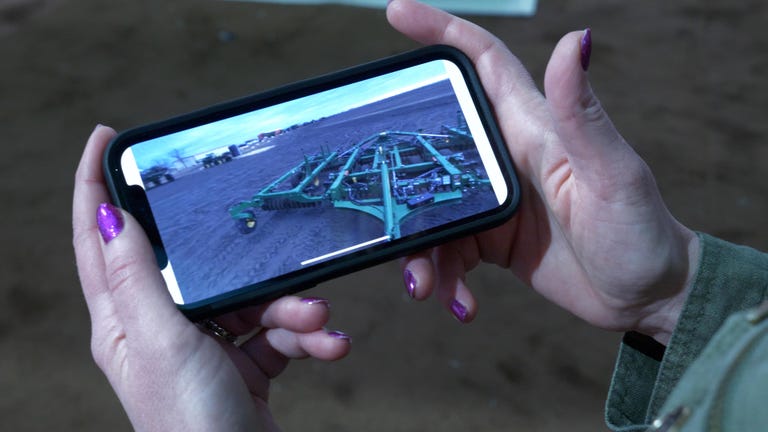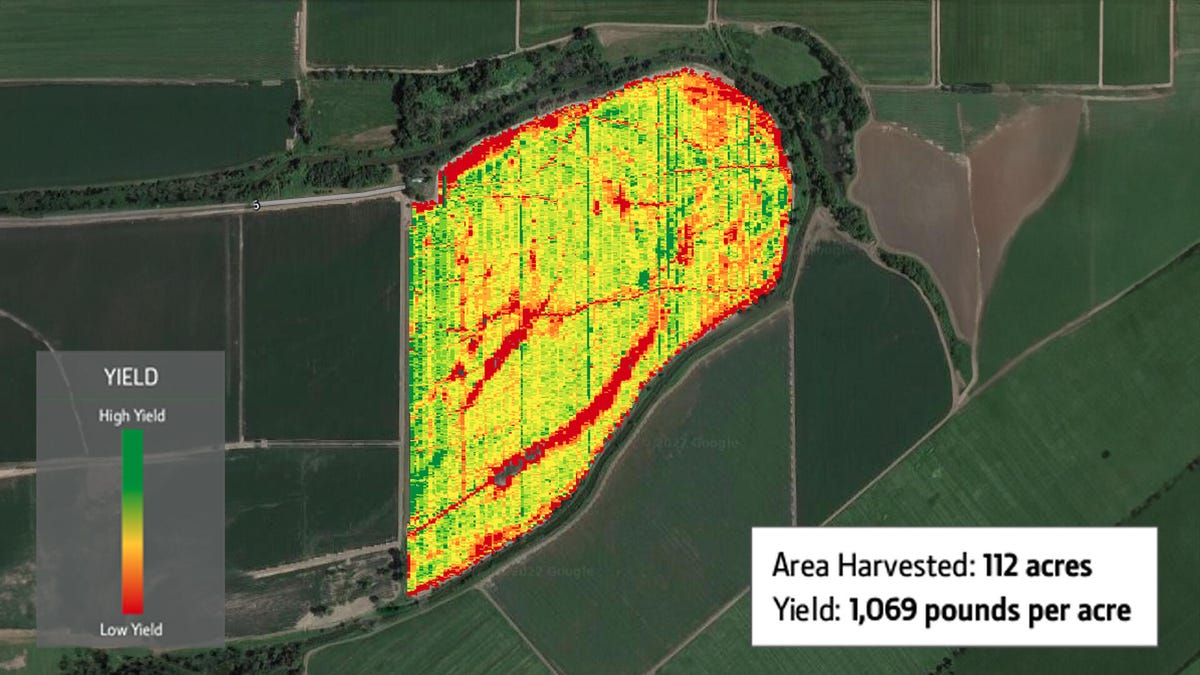Growing up in rural Illinois, my friends’ parents were farmers. The work is tough – early mornings, long hours and often-challenging conditions – and one wrong move can make or break the quality of a season’s harvest, which helps feed and clothe the nation. At CES 2024, the world’s largest tech show, I saw the future of farming. It starts with a phone, and app and a massive driverless tractor with unfolding arms, self-harvesting parts and nozzles that can spray when needed — but there’s more.
John Deere’s booth was full of colorful, blinking screens that might feel like data overload at first glance. But they contain a ton of real-time data (or demo data, in this case) about the tractors and crops in the field. The 50,000 pound tractor in the room, and fluffy cotton plants in the otherwise sterile convention hall, the giant, soft bale of cotton and row of cotton T-shirts were all window dressing to the information on the screens.

Watch this: I Drove a Tractor with a Phone 1,300 Miles Away
Cotton plants next to digital rows of onscreen data may seem incongruous when compared to mindbending TVs that unfold and AI everywhere, but John Deere and others have embraced autonomous tractors and fertilizer optimization in previous CES showings, and is further building upon these technologies to make real-time decisions simpler and more efficient for people running the 2 million farms in the U.S.
Remote tractor control is just the beginning
While the star of John Deere’s booth is undoubtedly the driverless tractor that can be remotely controlled from a phone app, like CNET producer Bridget Carey clearly had way too much fun with (watch her video above), what’s new has far less visual pizzazz, but is an important piece of the puzzle that’s designed to keep the whole efficiency farming project plowing ahead.
Since every square foot of a field is different, much of the opportunity for farmers to grow large amounts of high-quality crops comes through knowing their fields in intimate detail. For example, tiny variations in how many seeds are sown into the fields and how deeply the rows are tilled create hundreds of thousands of data points, and far too much biodiversity for farming operations to tackle manually.
A new cloud platform called Operations Center is designed to help monitor how different tasks are going, help optimize work plans and glean insights from field data, John Deere said.
Futuristic CES 2024 Tech Concepts We Can Hardly Wait For
On the show floor, I saw a demonstration of one component of this platform, a logistics interface that could track and direct multiple vehicles in real time. “A combine sitting idly in a field could be costing $5 a minute,” Doug Sauder, director of product management and user experience, said. Since the average U.S. farm owns 445 acres, equipment is inevitably spread out, and inefficiency can be treacherous for farmers’ delicate margins.
Sauder said the three key themes John Deere was highlighting at CES this year were how to manage a fleet of highly automated or autonomous equipment, how technology can help farm managers in light of challenging conditions and how to leverage data to dive into detail and make decisions that can ultimately help lead to less waste and fewer pesticides sprayed onto crops.
“You really want to be a micromanager and give every seed its most optimal potential,” he said. “The way we help farmers do that is by having every piece of equipment that goes to the field collect data in the form of a map.”
The industry term for this, “spatial indexing”, is key for farm success – and it sounds cool, too.

Operations Center aggregates data into the cloud to help farmers make better decisions.

